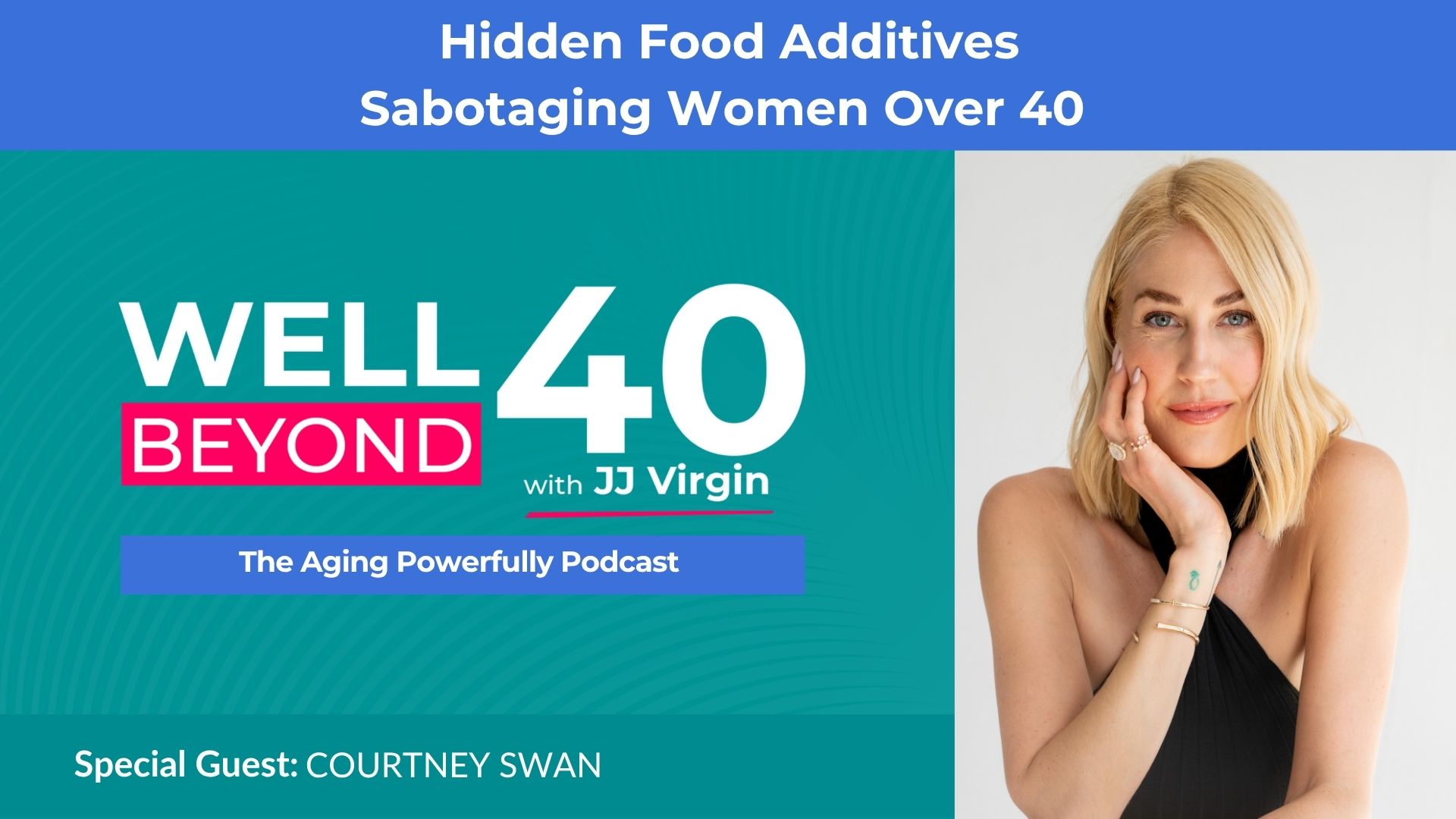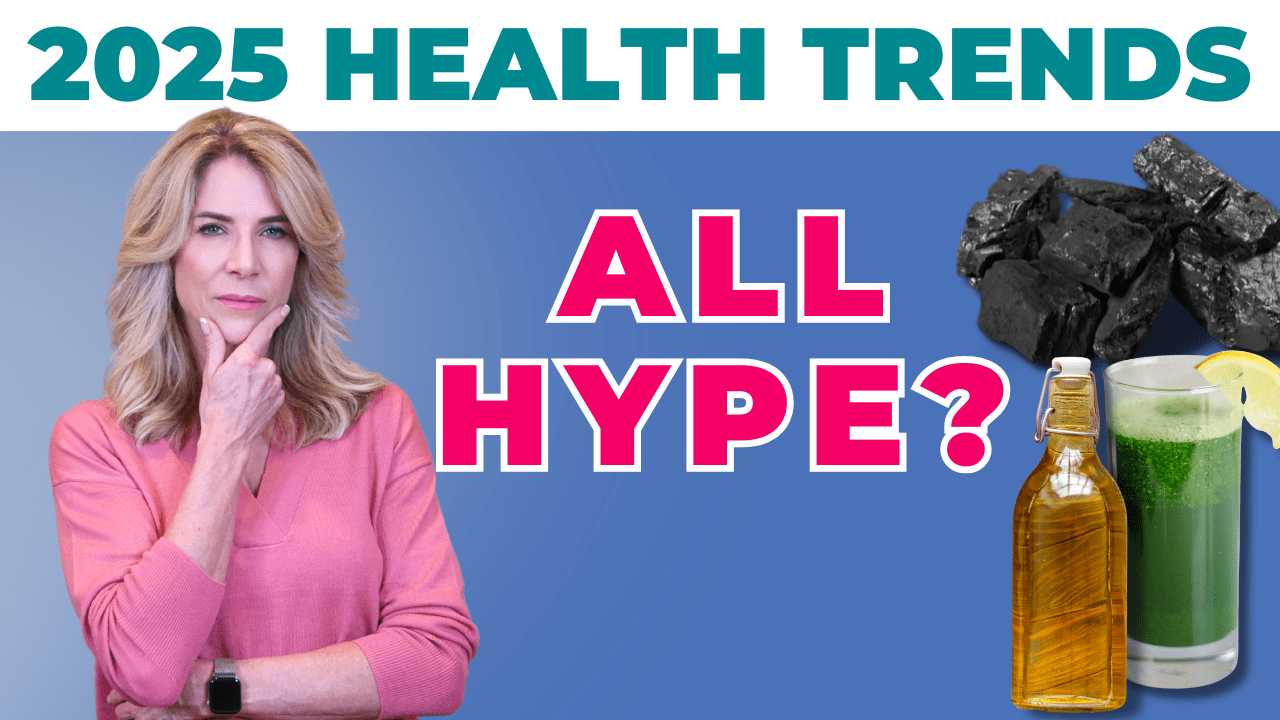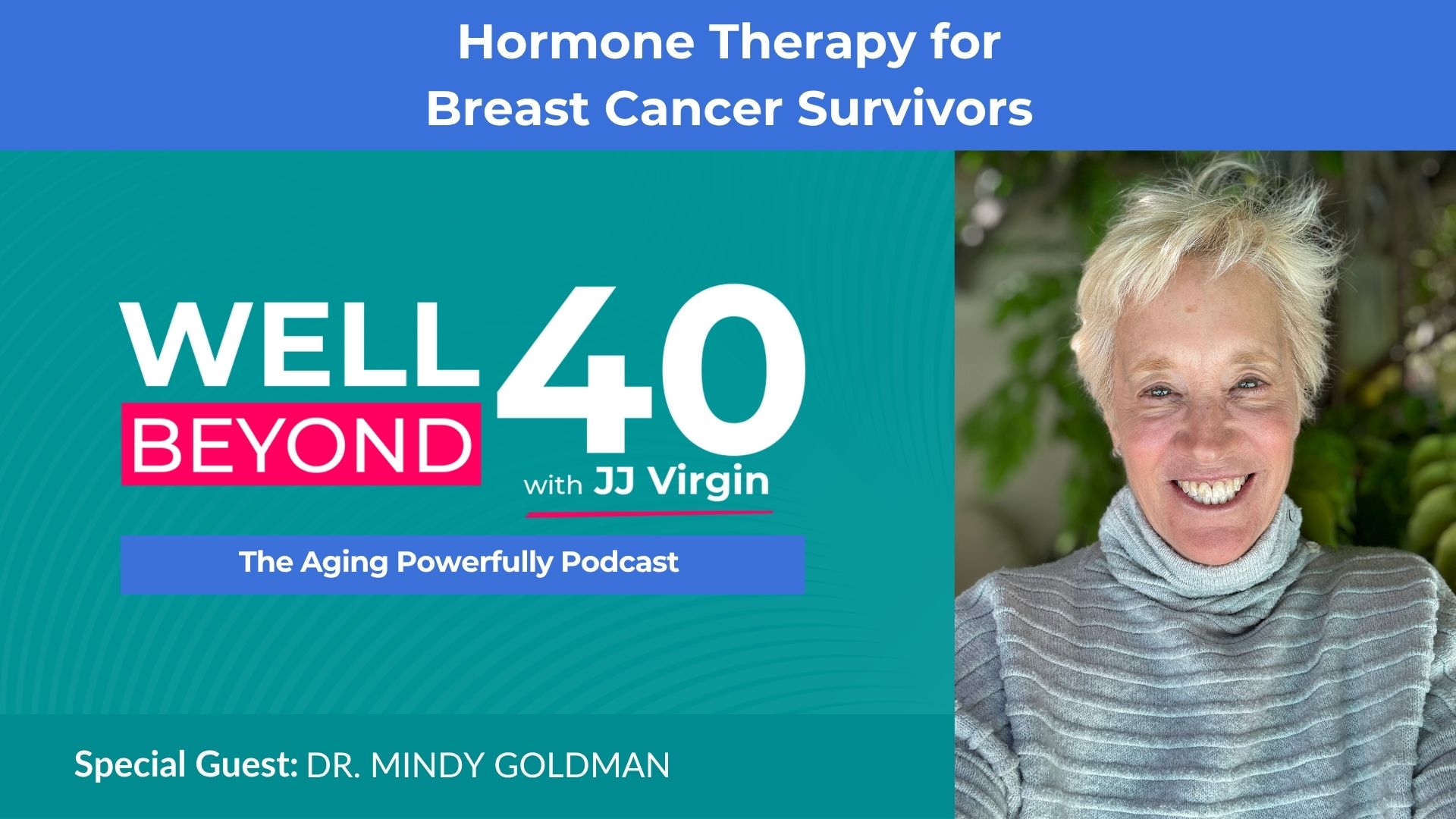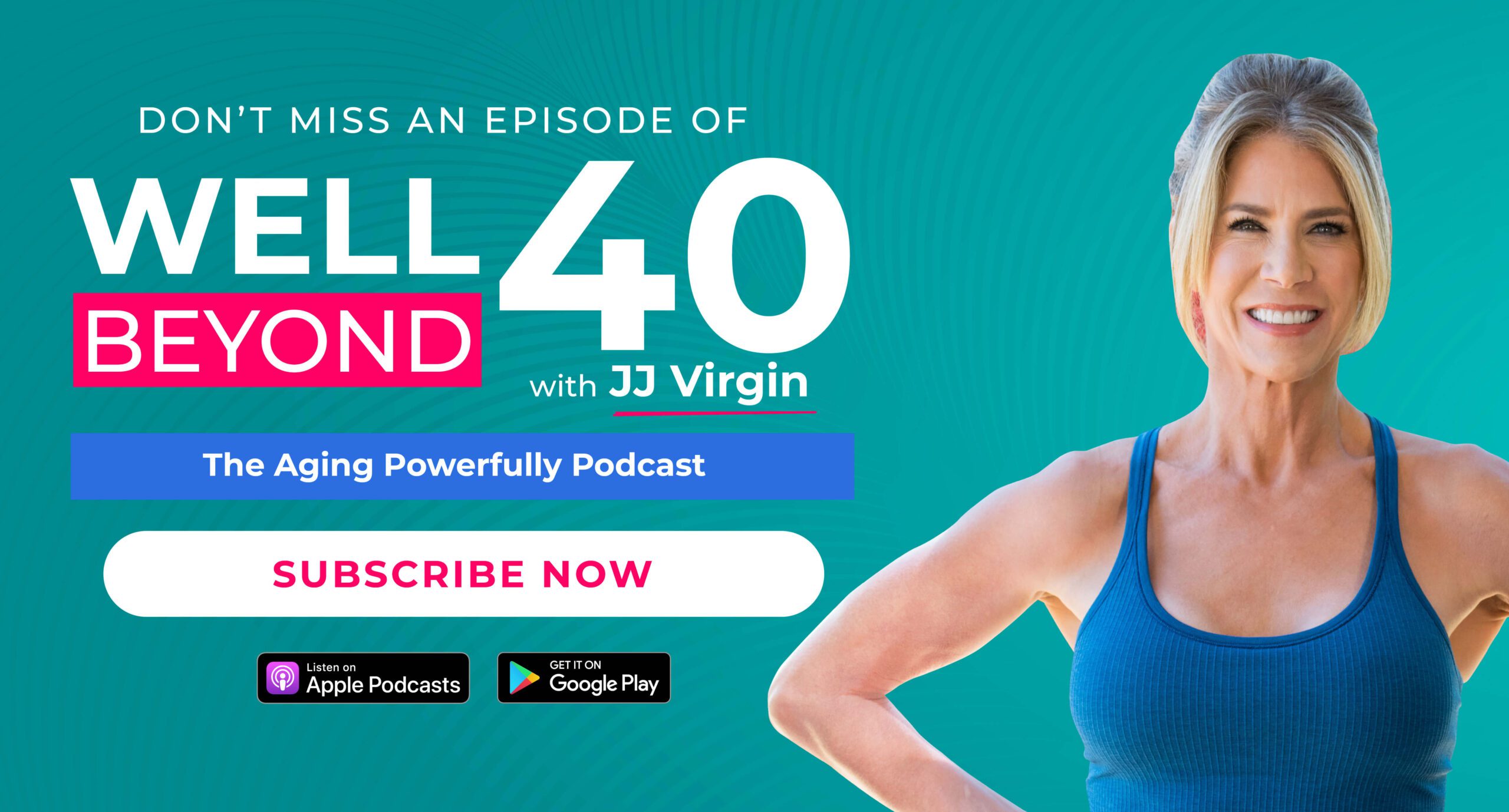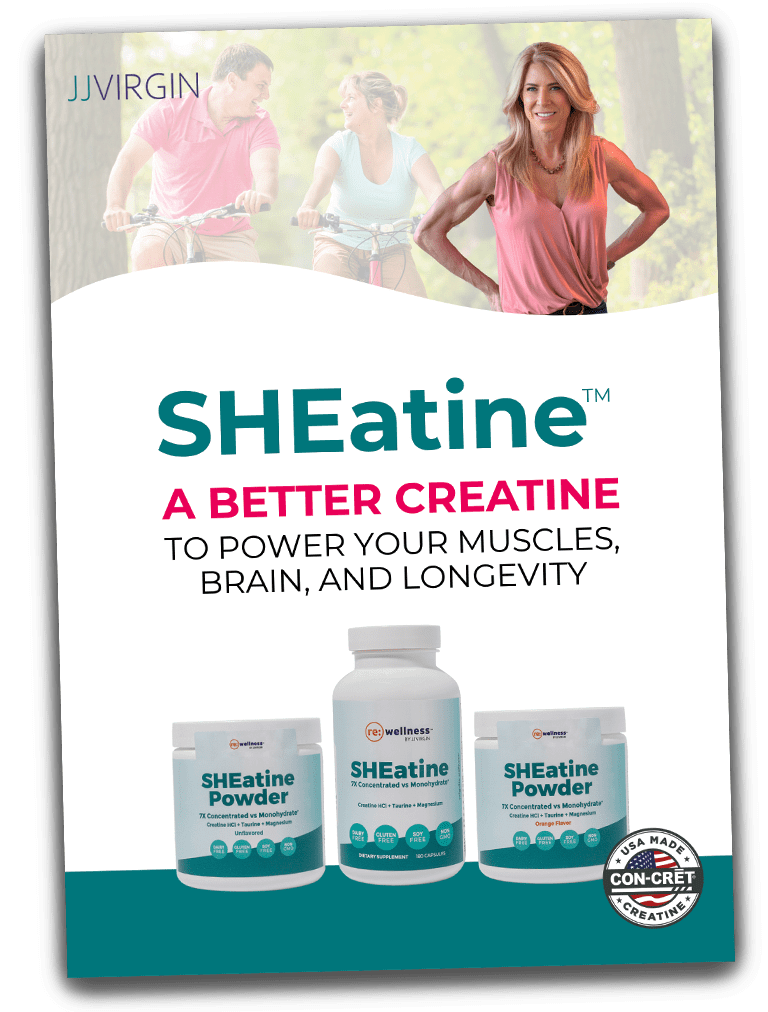Find Your Healthy Body Fat Percentage
Are you looking to lose fat and build muscle? In this episode, JJ shows you how to find and track your healthy body fat percentage… because what you measure, you can improve. You’ll learn why weight is only one measurement of being healthy. what body composition is, how to use testing to fine-tune fat loss and muscle gain, the critical focus for fat loss (it’s not your weight), how to find your ideal body fat range, and the most accurate body composition analysis and what it reveals. Plus, you’ll learn why a bathroom scale isn’t ideal to determine your weight (do this instead), how often you should weigh and measure, the biggest way to improve your body composition (it’s not diet and exercise), why cutting calories isn’t ideal for fat loss, what to eat to build muscle and burn fat, the best exercise for healthy body composition, and the critical key to creating lasting change in any area of life.
Mentioned in this episode:
Learn effective strategies to build muscle in your 50s (and beyond)
Learn why you’re probably not getting enough protein (and how to fix that)
Want to lose weight? Here’s why you should focus on building muscle
Order JJ’s recommended Tanita® scale to track your body composition
This Omron body composition scale also comes highly recommended by JJ
Learn more about a DEXA scan for bone density
Learn more about a DXA body scan
Track your sleep and more with Fitbit®
Learn more about Garmin® to track sleep and more
Track your sleep and more with an Apple Watch
Get a fat-burning workout in just 8 minutes
Learn how to build the perfect plate
ATHE_Transcript_Ep 509_The Best Way to Measure Body Fat
JJ Virgin: [00:00:00] Hey, this is JJ Virgin. Thanks so much for joining me. This is Ask the Health Expert. In each episode, I put the Power of Health in your hands and share ways to get healthy, lose weight, heal your gut detox, and lots more. So you can look and feel better fast if you’d rather watch the video. Hey, I did put on my makeup and do my hair, so check it out on my YouTube channel.
We’ve been obsessed with weight and only weight as a sign of being healthy for as long as I can remember, but it’s time to change the way we think about that. Weight is only one single measurement. We have so many more tools now that can give you a good read on your health and they can also help you track and improve it no matter where you start.
If you’re baking a cake, [00:01:00] you’re not measuring just one ingredient and then guessing on all the rest. Are you? Are you? I didn’t think so. So think about your body composition that same way. Your body weight is only one measurement of your overall health, and definitely not the end all and be all. You should also be focusing on your body composition by identifying exactly where that weight is coming.
So a body composition test will not only tell you your body fat percentage, but it can also help you fine tune what you need to eat for fat loss and muscle gain, along with pointing out any health risks you might be dealing with. So muscle has a lot of benefits. It makes you look and feel fit. It helps you burn fat.
It balances your blood sugar, and it’s mission critical for healthy aging. It’s why I call it metabolic spanks because literally it holds everything in tighter while boosting your metabolism. Lean muscle is [00:02:00] so important. Having an active quality of life for as long as possible, it does amazing things for our health.
First thing, keep yourself strong and prevent all the decline that comes with losing muscle as you age. And by the way, if you’re thinking, oh, but I have not been doing this, it’s never too late to start. Because as you get into midlife and beyond, this is when it gets even more important. So we’re gonna dig into body composition so you really understand it, know how to measure it, and most importantly, you know how to improve it.
So first step. What is it? So body composition is the breakdown of your body into body fat and fat free mass, which is basically everything else weight-wise other than your body fat, mainly muscle and bone. Basically, those two numbers cover everything you’re made up of. So it really helps you understand your body weight on a deeper level, and measuring it is the best way to tell if you’re losing body.[00:03:00]
Or gaining muscle. You cannot tell that on the scale alone. Now, if you’ve ever tried to lose weight but have gotten stuck, you know how frustrating that can be. But if you’re only relying on a regular bathroom scale, you’re just not dealing with the full picture. So you’re not setting yourself up for success.
The scale can tell you like how much you weigh, but body composition is gonna tell you where the weight is coming from, whether you’re building. Or putting on body fat, and those are such different beasts, right? So just because you aren’t losing pounds, it doesn’t mean you aren’t losing fat. You could be putting on muscle and losing fat at the same time.
So this is really important. You gotta know how much for your body is fat mass or body fat versus fat free mass. Because what we really need to be focused on here is maintaining, or better yet increasing fat free mass. If you lose weight [00:04:00] and it’s mainly fat free mass from muscle, that is not a good thing.
You are making yourself worse, not better. If you’re a woman, the average body fat range is 25 to 31% of your total. But that’s average. And you don’t wanna be average. You wanna be in the optimal range, right? And so the optimal range, or the fitness range is more in the 21 to 24%. And if you’re younger or really athletic, it could be 14 to 20%.
And guys, guys, your average is 18 to 24% of your total weight. But again, let’s not aim for average, right? You wanna shoot for the fitness range, which is 14 to 17%. And if you’re a real athletic guy, six to 13%. Now, whether you’re a man or a woman, if you’re above those averages I just gave you, you are considered to be metabolically unhealthy.
So you’re gonna want to jump on the information I’m giving you here today. Now, there’s a couple of ways you can measure body composition. So this really is step one. [00:05:00] There are five main ways you can do this, and you know they vary dramatically in accuracy. So the first one is a skin fold test. Now this is the test where they use skin fold CalPERS to pinch your body in a variety of different places.
It’s one of the oldest ways you can do this. And it’s really subject to what I would call user error. I used to do this all the time with clients. If you don’t hit the right places and know exactly how to pull the body fat off from the muscle, you’ll get the wrong read. The other problem with this type of body composition testing is that it cannot see visceral fat.
And visceral fat is the most damaging fat. We’re gonna talk about that in a minute, so this is not the one that I would recommend, obviously. All right. Numbers two, and. Hydrostatic waning, which is when you go underwater and the air displacement BOD Pod, they use your body weight with a displacement in water or in a chamber.
Now, in both cases, you have to go through a [00:06:00] company that’ll do it. It’s gonna take like, probably cost about 50 bucks to do it. So there’s that hassle. There’s also the hassle when you do the underwater weighing. Having done this a whole bunch in grad school, you have to blow all your air out and you have to sit on a little scale and not move underwater.
It is no fun to do. Now, on the other side, they’re pretty accurate. The air ratio is somewhere between one and 3%. And the great thing about the BOD POD is it can also tell you how many calories you burn at rest. So if you’re looking at dialing in your overall calorie needs, the BOD POD could be really helpful here.
All right, number four. Is the DEXA and the DEXA scan is the most accurate and advanced body composition analysis you can do. I really think this is something you should do one to two times a year. Now, you probably have heard of this as a bone density scan, but it can also differentiate between subcutaneous and visceral fat and provide a detailed a ssessment of how much muscle.
And fat mass you have down to the pound and [00:07:00] also where the heck it is. So this is again, one that I would love to see you doing once or twice a year. Obviously you’re not gonna do this all the time, and if you haven’t done a bone mineral density test yet, oh my gosh, come on. These should be something we start doing in our twenties.
So make sure that you schedule this right away. If you have not done a bone mineral density test, or you haven’t done one in the last couple years, For most people, and this is really important cause this is the way that you can track all along. The best way you’re gonna do this is by getting a bioelectrical impedance analysis machine.
Now these used to be really expensive. I actually have a $5,000 one that I had for years that I used on all the different TV shows, but now you can get ’em for a couple of hundred bucks. I’ve even seen them as low as a hundred bucks for ones that are gonna give you your fat free. Your fat mass, segmental fat and visceral fat, and that’s what you really wanna be looking for with these bioimpedance.
You wanna know how much muscle you [00:08:00] have. Fat free mass. You wanna know how much fat mass you have. You wanna know where that fat is, even though you think you know, but you really wanna know what’s called your visceral adipose tissue, your VAT. What’s cool about these things is that they’re portable, they’re affordable, they’re really easy to use.
Now they’re gonna have a bigger margin for. Three to 8%, but here’s the. The margin of error is really about your total body water when you do bioimpedance, it all has to do with measuring your total body water and extrapolating to know how much fat freemass you have. So if you see a big shift in your range, one day, you manage the trend.
So if you’re doing this, if you’re really doing this, I like to do my weight every day and my bioimpedance at least once a week. But if I see a weird jump in my bioimpedance I’ll just do it again the next day and I’ll look for the trends. So there’s a couple different ones out in the market that I really like.
I’ve worked with Tanita for years. T A N I T A. InBody’s another [00:09:00] great one. Omron’s another great one. And again, you wanna find one that’s gonna give you subcutaneous and visceral body. If it can tell you where the fat is even better. And of course your fat free mass. Now we’re gonna focus here on fat free mass, but if you’re wondering, cause you probably heard lean body mass and fat free mass and they’re
close, but they’re not quite the same. Fat-free mass consists of bone, muscle, vital organs, and extracellular fluid. But lean body mass also is gonna include the fat that’s in the cellular membranes. So it’s just a little bit more. So lean body mass might be a little bit higher, but we’re just gonna focus on fat-free mass cuz that’s what the scales tend to print out from.
The big thing here with fat free mass is you wanna make sure that your fat free mass, which we’re really focusing on here, is muscle, is sufficient and I’m gonna. Fantastic for your ideal body weight. As we age, we really gotta be [00:10:00] focused on maintaining or building muscle and supporting fat free mass so that we can stay active for the long haul.
When you think about it like where you wanna be in your sixties, seventies, eighties, nineties, because you gotta train for that now, you. This muscle now so you can stay active. So you can carry groceries up the stairs, right? So you can pick up kids, grandkids, great grandkids. And when you really look at some of the big mortality risks as we age, it’s frailty.
So I say forget aging gracefully. You wanna age powerfully. And by putting on muscle, you can totally avoid, avoid that frailty, mortality risk. Now the charts out there tend to focus on body fat percentage. So the easy way for you to determine if you need more muscles to do this, here’s how you go. You first determine your ideal body weight.
There are charts online where you can find height and frame size. So that’s the first thing you’re gonna do is figure out your frame size. The best way to do it is actually at your [00:11:00] elbow, and then you’re gonna figure out your ideal body weight range based on your frame. So then pick the number in that range that you want.
Then next up you’ve gotta figure out. What is your ideal body fat? What do you want it to be? Now, let’s say that you say, you know, I wanna be fit, so I want to have an ideal body fat of 20%. If you know you want your ideal body fat to be 20%, how much this is a math question, how much does your fat free mass need to be?
Well, a hundred minus 20 is 80, right? So it needs to be 80%. So now we know that we want 80% of our ideal body weight to be fat free mass. What you do is you take the 0.8 and you multiply your total body weight by that, and that is what your fat free mass should be. So now you can look at the scale and go, ha, looking at the scale, do I need to put on muscle?
Or do I need to lose overall weight? Trying to hold onto as much [00:12:00] muscle as possible while I lose body fat? Because quite often if you’re like, have maybe 10, 20, 30 pounds to lose, it may be that you actually need to put a little bit of muscle on. It’s not as much of a focus as losing the fat. Next, we’re gonna look at your body fat, and what I want you to look at here is your visceral fat.
Again, that’s usually called V A t, visceral adipose tissue. Now we want that number as low as possible, but here’s the benchmark. It needs to be 10% or less of your total fat. So let’s say you weigh 150 pounds, you have 20% body fat, so 20% body fat. For 150 pounds is what? Let’s, I’m gonna have to do math on the fly 30 pounds.
And that means you should have three pounds or less of visceral fat. Here’s the thing, if you find that you tend to have a bigger, bigger belly fat, but you can’t, it’s not really pinching it, it’s deep internal. This is [00:13:00] the dangerous, dangerous, fat, and this is what we really need to focus on. Another key way you can look at this number is you want to look at your height versus your waist.
And your height divided by your waist should be less than 0.5. So that is another way that you can start to watch this because you wanna make sure is that as you’re losing weight, you’re losing your waist. As you’re losing weight, you’re holding onto muscle and dropping fat. Now, if you have a lot of mass to lose, you’re gonna lose some of that fat-free mass too.
It’s actually supporting your fat. But as you get close to where you want to be, it’s all about holding onto or building muscle. As you lose fat. So now you know what to focus on, and that’ll help you see what’s working and what isn’t working. And you gotta not be afraid of this here. The scale is a biometric tool.
It is not a mean friend. It’s on your side. It’s helping you out, right? But you gotta look at the right numbers here. And go and just be curious and be open. If you go, wow, I’m stepping on the scale. Why is my body fat [00:14:00] going up with everything I’m doing? Then it can allow you to make some shifts in your, in your program, right?
Really knowing your body composition is the first step in transforming your body and understanding your progress. So if you’re just getting started working on your weight or fitness, a body composition scale is gonna give you that benchmark and put you way ahead of the curve. Now, I want you to weigh in.
But you don’t need to monitor your body fat daily. You can, but what you’re really looking for are the trends. And again, because it really, it fluctuates based on total body water. If you’re a little dehydrated one day, you might see your weight drop a lot and your body fat go up, that’s dehydration. Or if you start to see your weight go up and your body fat go down, you might be a little over hydrated.
So you watch the trends over. Right. You really wanna see what’s going on with your body fat percentage, what’s going on with your muscle mass. And again, you’re watching those trends and then that’s gonna allow you to fine tune your nutrition and your fitness habits [00:15:00] based on your body composition goals and the results what’s happening in real time.
So here’s how you make the biggest shift in your body composition. Cause I’m sure that was the next question, right? All right, so what do I do with this? So you always hear diet and exercise. Diet and exercise. Diet and exercise. And guess what? Diet and exercise are both gonna play a role here in improving your body composition.
Nutrition to start is gonna make the bigger impact To start, if you wanna lose body fat, you’ve gotta change what’s at the end of your fork. Now when you eat by. And you focus on protein first, that’s gonna help you hold onto or build muscle, lower your sugar impact, right? Really go protein, non-starchy vegetables, a little bit of healthy fat, and reduce your overall calories.
Maybe by throwing in some intermittent fasting that can help here. But if your goal is weight loss and it’s fat loss, You wanna make sure that you’re still [00:16:00] holding onto muscle, cuz muscle is key here. So that’s why we don’t go and drastically cut calories, because if we do, we could lose some of that muscle too.
We wanna make sure that we’re holding onto muscle as we’re losing fat. All right. So the other challenge there is if we do that, try to stick to a low calorie diet for any amount of time. If you’re especially working out now, if you wanna gain muscle mass, you’re going to need to increase the amount of protein you’re eating and have a video called What to Eat, when to Eat, and Why for muscle mass.
That will tell you all about this, give you tons of strategies and tips for building lean muscle. So be sure to check that out. If your goal is to maintain your weight and change your body composition. You’re gonna use the scale to keep an eye on which foods and how much of them help you dial in that goal.
And I’ll tell you one thing that’s important here that’s called recomping, where you drop body fat, you put on muscle. And the deal with recomping is you can do this if you’re coming in and you haven’t really worked out. But if you are already a fairly fit person, you generally have [00:17:00] to decide if you’re putting on muscle or if you’re losing fat.
You really can’t do both at once. Once you’re at a a fairly decent fitness level. If you’ve been working. Now if you wanna lose weight, your goal of course is to lose more fat than muscle. And depending on how much weight you need to lose, if you have a lot of weight to lose, you’re gonna lose more of that fat free mass as well.
But you really wanna make sure that percentage is gonna be higher from fat and. If you wanna gain weight, your goal is to gain more muscle mass than fat, right? So dialing in your macros is gonna help you here dramatically. So I want you to check out my video on the right macros to fill your plate. You wanna make sure you’re getting enough protein to support your lean mass, and also help you build that additional muscle mass.
If you don’t have the surplus you need there, you won’t be able to build. And then you adjust your fats and carbs according to type and intensity of your. All right, so how much protein is enough? What a huge question this is out [00:18:00] there, and the deal is there’s a range. The absolute floor, the least amount you should get no matter what is about a half gram per pound of ideal body weight every day.
But that is, I’m telling you, the absolute floor. Like if you’re intermittent fasting, reality is you should be getting more like three, four gram to a gram per pound of ideal body. And if you’re really looking to put on muscle, you’re gonna wanna stay on the higher end and maybe even above that, especially if the demands on your body are high.
Like if you’re under stressor, you’re really lifting heavy and working to put on muscle, or if you’re injured or healing or you’re ill. So none of that’s the case then, you know, shoot for three fourths of a gram to one gram of protein per pound of ideal body weight. Remember I keep saying ideal body weight.
Now if you’re eating animal protein, here’s the good news. It’s gonna give you all the essential amino acids your body needs. And specifically here I’m talking leucine, methionine, and lysine are really important for [00:19:00] helping you trigger mTOR and build muscle, especially leucine as the trigger element there.
But remember, You are what you eat, ate right, meaning not just what you eat, but what the animal ate to. So you gotta choose wisely. That means pastured beef, not corned cows. Think of those corn-fed cows like they are the white bread of beef and choose wild salmon rather than factory raised right that factory farm raised salmon.
Again, think of those factory farmed animals and fish as the junk food because the difference in their fatty acid profile compared to a wild pastured one basically takes a healthy option and starts to shift it into the unhealthy zone. Changes its fatty acid profiles can add in stress hormones, maybe extra hormones.
So really focus there. Now, if you are plant-based, You probably know, you really have to focus on getting enough protein without overdoing the fat or the carbs. Like example, if you’re relying on beans, lentil seeds, nuts, and things like [00:20:00] that, you’re gonna be getting a lot of carbs and fat just to get enough protein.
So here’s a tip. You wanna make sure all this great protein is actually getting metabolized and utilize. So if you’re over the age of 35, you may wanna add a little trial of digestive enzymes. In fact, definitely you’re gonna wanna do this because that’s just about the age when our’s start to naturally decline.
By the way, if you’re under any kind of. Happens sooner than that. Now also, when you eat protein, new research is showing that when you eat the right amount of protein at the right times, it’s better for your overall health and it’s the best way to gain muscle and lose fat. So the what, when combination is also important because if you’re just focusing on weight loss, as I said, but you’re gonna lose some muscle too, and that just starts to slow your metabolism down, right?
So you could end up losing a little weight at the front. Gain fat in the back end. That’s not what we wanna have [00:21:00] happen. So you wanna make protein the first thing you put on your plate to build muscle and maximize fat loss. In fact, when you really look at how you should eat protein, your bumper meals, what you eat first in the day and what you eat last in the day are so key important with at least 30 grams in each of those meals, you can eat somewhere in the 30, probably up to 60 grams, still assimilate most of that protein, so do not worry about that.
Okay, then. Just moving more obviously is gonna help you burn calories and lose body fat. But to build muscle, you’ve gotta incorporate strength and resistance training. Lifting weights, lifting heavy weights is a great way to support your lean mass. And when you have more lean mass, you’re gonna burn more fat.
Body weight exercises can work great here. It’s really about what challenges you. So you know, pushups. Might be a great one. If you get super strong on the pushups, then maybe you’re gonna need to use blocks to be able to go a little harder, right? Or get up on a ball to do ’em. Pull ups. Another good one.
[00:22:00] You might think you can never do ’em. I challenge you on that. And then you remember, you gotta commit, you gotta do this, you gotta stick with it. That is the only way real change happens. Going to the gym for one week or eating more protein for one week is not gonna do anything. It’s consistency over time.
You gotta stick with it and do the work. Now, that does not mean you need to suffer, right? You can make these small changes that you can handle and build on them, and that’s really how you do resistance training. And you gotta be patient. Pick a. Like hitting your daily macros and keep working on that one thing till you nail it.
Then do another one, like, I’m gonna start getting to the gym. Then do that one till you’ll nail it and all of a sudden you’ll look around like six months later and go, holy smokes. Looks what happened? Because if you wanna add muscle, this takes time. Right. If you can add a pound of muscle a month, that’s amazing.
So you gotta give yourself time for success here. All right, thank you so much for joining me. And for those of you don’t know me, I’m JJ Virgin. I’m a four times New [00:23:00] York Times bestselling author and a fitness hall of famer. And I have lots more I can share with you to help you get your body composition and your health where you want it to be.
So check out and like my other videos on how to increase your lean muscle mass, and I will see you next.
For more info on this and other health topics I cover or to rate and review, find me on Instagram, Facebook, and my website jjvirgin.com. And don’t forget to subscribe to my show so you won’t miss a single episode. Go to subscribetojj.com. Thanks again for being with me this week.
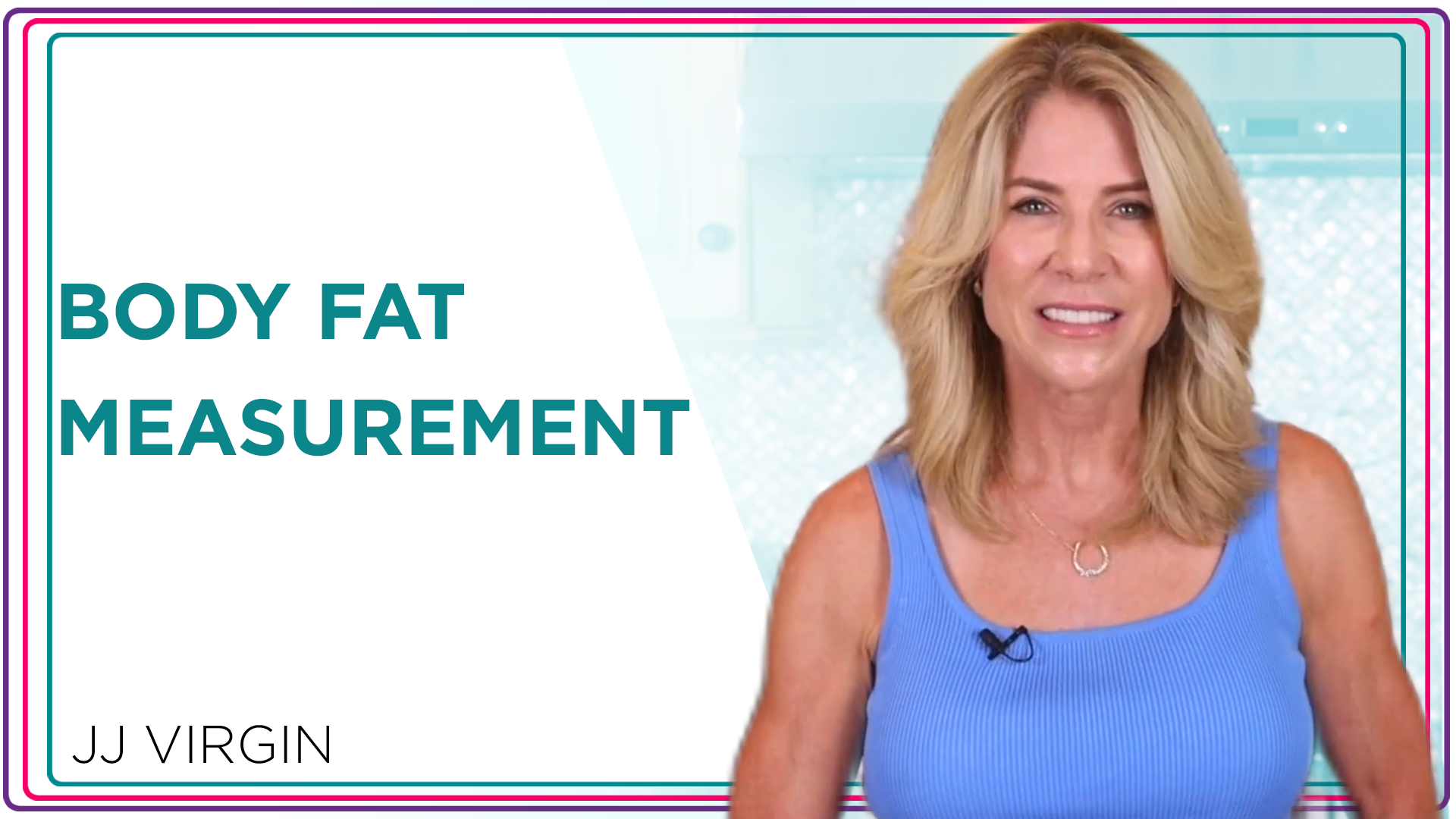
 Subscribe to our show
Subscribe to our show 